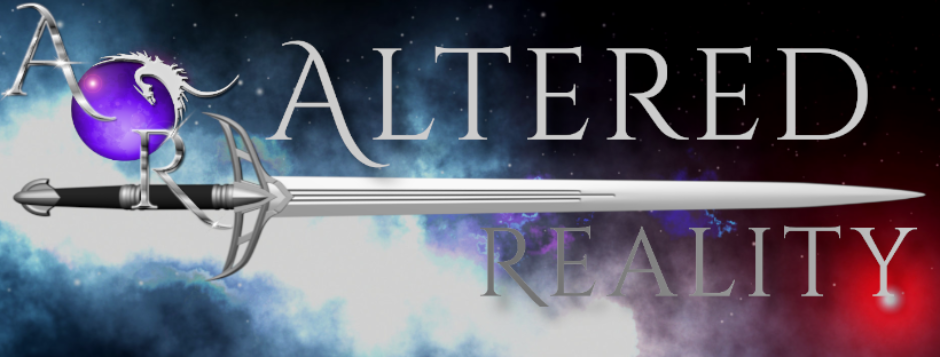Saturn Research Team Alpha-1
in low lunar orbit around Enceladus
Captain’s Log, Universal Earth Time
Day 1
07:00
Cameras plunge forty thousand feet below the icy surface
of Enceladus near the seawater geysers spotted by Cassini’s
flyby last century. Telephonic transmitters survive the long
trip to the ocean floor. Sensors, ultraviolet through microwave,
fully operative. Microphones sound check: affirmative.
Day 2-Day 9
Instruments record nothing but background electronic noise
in the stark stillness.
Day 10
14:30
Cameras capture an unfolding drama: a foot-long encephalopod-like
creature flashes colors to an unwelcomed, encroaching visitor—
perhaps a warning for the sleek black shape blending in with draping
darkness on the ocean floor to leave. Instead, this predator, reptilian,
with oversized fins, propels its bulbous head bristling with teeth closer.
The tentacle denizen secretes luminous ink—more countermeasures
to disorient, distract the intruder, which jets away. But that tactic fails—
The two-foot assailant slowly returns toward its prey.
14:50
A bioluminescence, triggered in the cephalopod’s eleven arms,
refracts into rainbows through its translucent flesh, pulsing rapidly,
is transduced into sound. Apparently, the frequencies are neither
seen or heard by the alien predator as it inches closer.
14:51
Hydrophones detect these ultrahigh modulations radiating for miles
through highly pressured water. Spectral analysis reveals encoded
signals are being transmitted, interestingly, they do not display
characteristics of distress signals. The predator isn’t deterred.
14:57
Thermal imaging by microwave sensors in Sector B three kilometers
away, reveals an object with a discoid profile swiftly approaching
yet in stealth, apparently remaining undetected by the toothy predator.
The encephalopod displays quickly undulating, intense colors, and
an apparent acquiescence as the predator homes in on the alien squid.
Then nothing but a huge puff of seafloor sand. Modulated signals cease.
15:00
It’s all over. A glow of intense blue, followed by an eerie green,
scatters through the disturbed silt. Then the writhing
of the squid-creature. Its tentacles caress the huge discus
shaped fish, which must have devoured the would-be predator.
Soft purring melodies are recorded from both creatures.
Conjecture: That final light-display and songs must be more than
a thank you for the rescue. But was this a rescue? Perhaps it was
a strategic plan between two symbiots—now enjoying their spoils.
 John C. Mannone, the 2020 Dwarf Stars Award winner and an HWA Scholarship recipient (2017), has poems appearing in North Dakota Quarterly, Blue Fifth Review, Poetry South, Baltimore Review, Pedestal, and others. He won the Impressions of Appalachia Creative Arts Contest in poetry (2020) and the Carol Oen Memorial Fiction Prize (2020). He was awarded a Jean Ritchie Fellowship (2017) in Appalachian literature and served as the celebrity judge for the National Federation of State Poetry Societies (2018). His full-length collections are Disabled Monsters (Linnet’s Wings Press, 2015), Flux Lines: The Intersection of Science, Love, and Poetry (Linnet’s Wings Press, 2022), Sacred Flute (Iris Press, 2023), and Song of the Mountains (Middle Creek Publishing, 2023). He edits poetry for Abyss & Apex and other journals. He’s an Assistant Professor of Physics and Chemistry, who also teaches Astronomy at Alice Lloyd College, as well as an invited Professor of Creative Writing [Poetry]. He lives in southeast Kentucky.
John C. Mannone, the 2020 Dwarf Stars Award winner and an HWA Scholarship recipient (2017), has poems appearing in North Dakota Quarterly, Blue Fifth Review, Poetry South, Baltimore Review, Pedestal, and others. He won the Impressions of Appalachia Creative Arts Contest in poetry (2020) and the Carol Oen Memorial Fiction Prize (2020). He was awarded a Jean Ritchie Fellowship (2017) in Appalachian literature and served as the celebrity judge for the National Federation of State Poetry Societies (2018). His full-length collections are Disabled Monsters (Linnet’s Wings Press, 2015), Flux Lines: The Intersection of Science, Love, and Poetry (Linnet’s Wings Press, 2022), Sacred Flute (Iris Press, 2023), and Song of the Mountains (Middle Creek Publishing, 2023). He edits poetry for Abyss & Apex and other journals. He’s an Assistant Professor of Physics and Chemistry, who also teaches Astronomy at Alice Lloyd College, as well as an invited Professor of Creative Writing [Poetry]. He lives in southeast Kentucky.
http://jcmannone.wordpress.com
https://www.facebook.com/jcmannone
![]()






